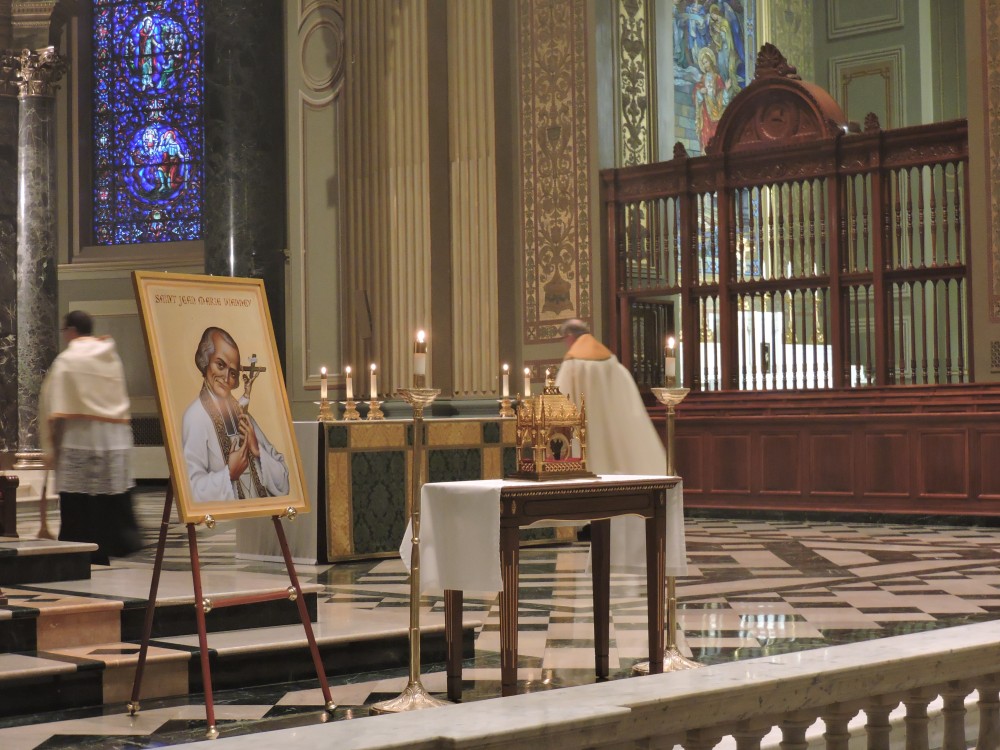What do relics mean to believers today?
A six-month U.S. tour, The Heart of a Priest, is offering the chance to venerate a relic of St. Jean-Baptiste-Marie Vianney.

It was a ceremony that, except for modern conveniences like central heating and electric lights, and a woman leading congregational singing from the lectern, could have occurred in a European cathedral centuries ago.
The center of attention was a relic: the heart of 19th-century Catholic priest Jean-Baptiste-Marie Vianney, gray but otherwise undecayed, encased in a gold reliquary.
Awash in pungent clouds of incense, clergy escorted the saint’s heart up the side aisle and down the center of Philadelphia’s Cathedral Basilica of Saints Peter and Paul before placing the relic on a table facing the congregation of approximately 200 priests, nuns, and laypeople.




